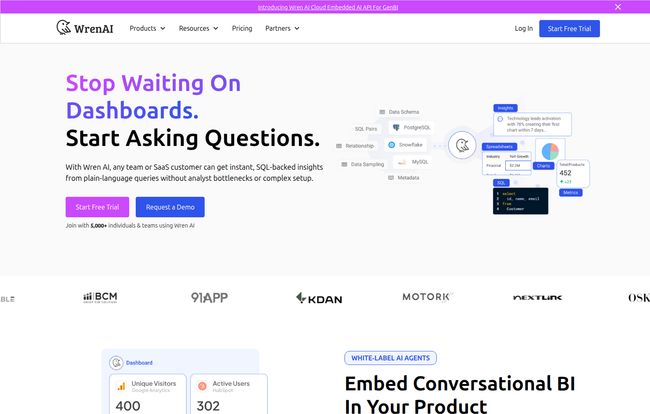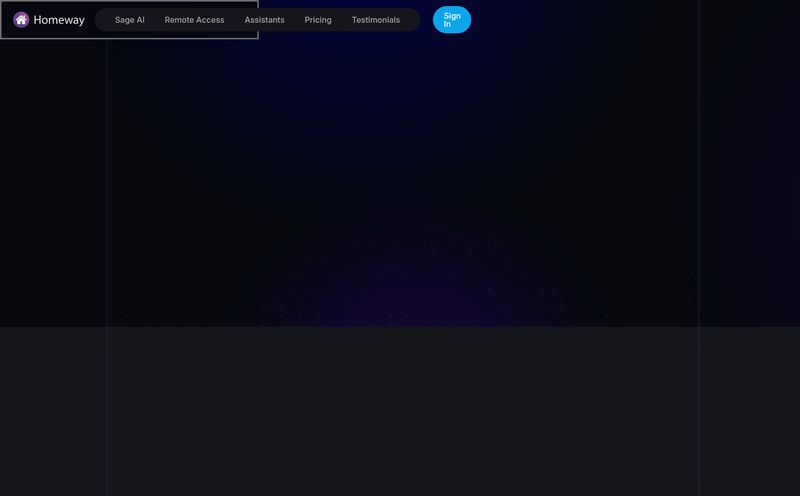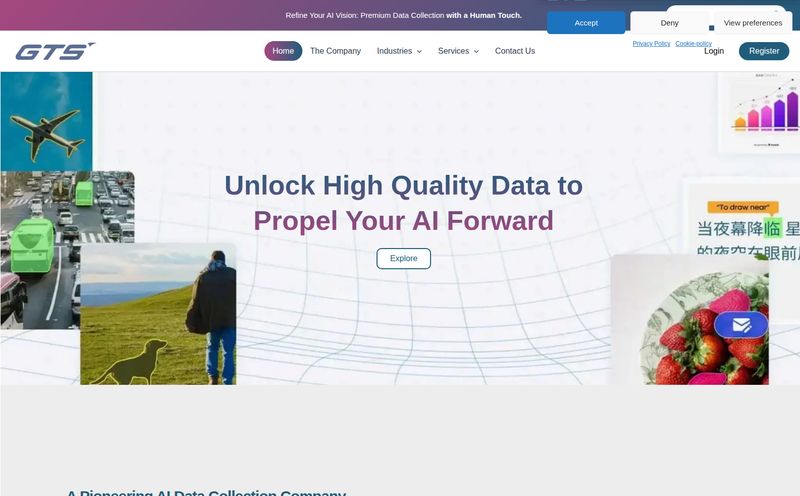I've been there. You've been there. We've all been there. That sinking feeling when you need a simple data point for a big presentation, and you know the request will get buried in your data team's Jira backlog for a week. You need to know which marketing channel had the best conversion rate last month, but the dashboard hasn't been updated, and the analyst who knows the query is on vacation. It's a tale as old as time... or at least as old as business intelligence.
For years, we've been told the solution is more dashboards. More charts. More filters. But what if the problem isn't the dashboard, but the entire concept of waiting for a pre-built report? What if you could just… ask?
That's the promise of a new wave of tools, and Wren AI is right at the front of the pack. Their tagline hits you right in the feels: "Stop Waiting On Dashboards. Start Asking Questions." I have to admit, that got my attention. So I decided to take a look and see if it's just marketing fluff or the real deal.
So, What Exactly is Wren AI?
In a nutshell, Wren AI is a platform that lets you talk to your data. I'm not kidding. You connect it to your databases (think Snowflake, BigQuery, your trusty PostgreSQL) or even apps like HubSpot and Google Sheets, and then you can ask it questions in plain, normal English. No more trying to remember the exact syntax for a SQL JOIN or bugging your engineering team.

Visit Wren AI Cloud
It falls under this new-ish category called "Generative BI" or GenBI. Think of it like ChatGPT for your company's private data. Instead of asking it to write a poem, you ask, "Show me our top 10 customers by revenue in Q2" or "What was the daily active user count for the last 30 days?" and it generates not just the answer, but the SQL query to get it, and even a chart if you want. It's like giving everyone in your company a fishing rod instead of making them wait for the one person with a boat to bring them a fish.
Who Is This For? (And Who It's Not For)
After playing around with it, I can see a few groups of people whose lives would get instantly easier.
- Business & Marketing Teams: This is the most obvious one. If you're a marketing manager who just wants to know which blog posts are driving the most signups without having to learn SQL, this is for you. You get to be more self-sufficient and make faster decisions.
- Product Teams: Here's where it gets really interesting. Wren AI is API-driven, which means you can embed these conversational analytics directly into your own product. Imagine letting your own customers ask questions about their usage data right inside your app. That's a seriously powerful feature.
- Overwhelmed Data Teams: This tool is a pressure release valve. It frees up data analysts from the constant barrage of simple, ad-hoc requests so they can focus on the deeper, more strategic work that actually moves the needle.
Now, who isn't this for? If you're a solo-preneur with all your data in one simple spreadsheet, this might be overkill. Also, if you're a hardcore data scientist who loves writing complex queries from scratch and wants total manual control, you might find the AI a bit of a black box, though you can always review the SQL it generates.
My Favorite Features (The Good Stuff)
There are a few things that really stood out to me as more than just gimmicks.
The Magic of Natural Language to SQL
This is the core of it all, and it works surprisingly well. The ability to just type a question is the killer feature. It lowers the barrier to entry for data analysis to practically zero. It's not always perfect, and you have to phrase your questions clearly, but the speed it provides for 80% of common business questions is undeniable.
Embedding Analytics Is a Game-Changer
I mentioned this before, but it's worth repeating. Most BI tools are internal-facing. The idea of offering conversational, AI-powered analytics as a feature to your own customers is a huge value proposition. This moves Wren AI from just an internal tool to a potential revenue-generator for SaaS companies.
The Semantic Layer: No More 'What Does This Metric Mean?'
This is a slightly more technical feature, but it’s critical. Wren allows you to build a "semantic model," which is a fancy way of saying you define your business terms once. You define what a 'monthly active user' or 'customer lifetime value' is, and the AI uses that definition every time. This prevents situations where the sales team and the marketing team are both looking at "revenue" but have two completely different calculations. It creates a single source of truth. In my book, that's a huge win.
Let's Talk Turkey: Wren AI Pricing and Plans
Alright, so how much does all this magic cost? The pricing model is pretty flexible, which I appreciate. It's a mix of monthly subscriptions and a credit system.
| Plan | Price | Best For |
|---|---|---|
| Open-Source | Free | Personal use, developers, or anyone wanting to self-host and experiment. |
| Starter | $49/mo (yearly) or $60/mo (monthly) | Small data teams who need to connect and query databases. Comes with 300 monthly credits. |
| Essential | $179/mo (yearly) or $224/mo (monthly) | Larger teams needing collaboration, API access for embedding, and more integrations. Comes with 1100 monthly credits. |
| Enterprise | Contact for Pricing | High-volume use, strict compliance needs, and on-premise deployment options. |
Understanding the Credit System
The plans come with a certain number of credits, and you use them for different actions. For example, asking a question might cost 5 credits, and generating a spreadsheet might cost 1 credit. This is pretty transparently laid out on their pricing page. It's a way to pay for what you use, but it also means you need to keep an eye on your usage. Heavy, query-intensive users might find themselves needing to buy more credits, which can add up.
The Potential Downsides (Because Nothing's Perfect)
Look, no tool is a silver bullet. While I'm pretty bullish on Wren AI, there are a few things to keep in mind.
First, teh credit-based pricing is a bit of a double-edged sword. It's great for getting started, but costs can become unpredictable if your entire company starts asking questions all day long. You’ll need to have some sense of your expected usage.
Second, you're still relying on an AI. It's smart, but it's not infallible. The old saying "garbage in, garbage out" still applies. If your underlying data is a mess, Wren AI can't fix that. And for really critical, high-stakes financial reporting, you'll still want a human to validate the query and the results. Don't just blindly trust the machine with the company's fate.
A Quick Comparison: Wren AI vs. Traditional BI Tools
So, does this replace something like Tableau or Power BI? Not exactly. I see them as companions. Traditional BI tools are fantastic for creating detailed, beautiful, and interactive dashboards that serve as a company's command center. They are about visual data exploration within a pre-defined framework.
Wren AI is different. It’s for the questions that aren't on the dashboard. It’s for speed and ad-hoc inquiry. It's more about conversation and less about static presentation. You might use Power BI for your main KPI dashboard, but use Wren AI when your CEO asks a totally random question in a meeting that you need to answer in the next 5 minutes. They solve different, though related, problems.
Frequently Asked Questions about Wren AI
Can I really use Wren AI for free?
Yes! They offer a self-hosted, open-source version which is perfect for individuals, developers, or small teams wanting to try it out without any financial commitment. It's a pretty generous offering and a great way to see if it fits your workflow.
Do my data credits roll over if I don't use them?
They do, which is a nice touch. According to their site, unused monthly credits roll over up to 2x your monthly allowance. This gives you some flexibility for months where you have lower or higher query volumes.
Is my company data secure with Wren AI?
This is obviously a huge concern for any company. Wren AI states that it provides a secure and reliable infrastructure and, importantly, doesn't expose your sensitive data to public Large Language Models (LLMs). For maximum security, the Enterprise plan even offers an on-premise solution.
What kind of data sources can I connect?
It's designed to connect to a wide range of modern data sources. This includes major data warehouses like Snowflake, BigQuery, and Redshift, standard databases like PostgreSQL and MySQL, and even business applications like HubSpot, Airtable, and Google Sheets.
Will Wren AI replace my data analysts?
I don't think so. It makes them more powerful. A tool like Wren AI handles the repetitive, simple questions, freeing up analysts to focus on more complex, strategic projects like predictive modeling, deep-dive investigations, and building a more solid data foundation. It empowers non-technical users, but it doesn't replace the strategic oversight of a data professional.
My Final Verdict: Should You Give Wren AI a Shot?
Here's the thing: the way we interact with data is changing. The era of waiting days for a report is slowly, thankfully, coming to an end. Wren AI is a smart, well-designed tool that directly tackles the biggest pain point in business intelligence: access.
It’s not perfect, and it requires a shift in thinking, but the potential to speed up decision-making and empower your entire team is immense. The fact that you can start for free with the open-source version makes it a complete no-brainer to at least try. For small to medium-sized businesses, the Starter plan is very reasonably priced for the power it gives you.
If you're tired of being in the data waiting room, I'd say it's absolutely time to start asking some questions. Wren AI might just have the answers.



